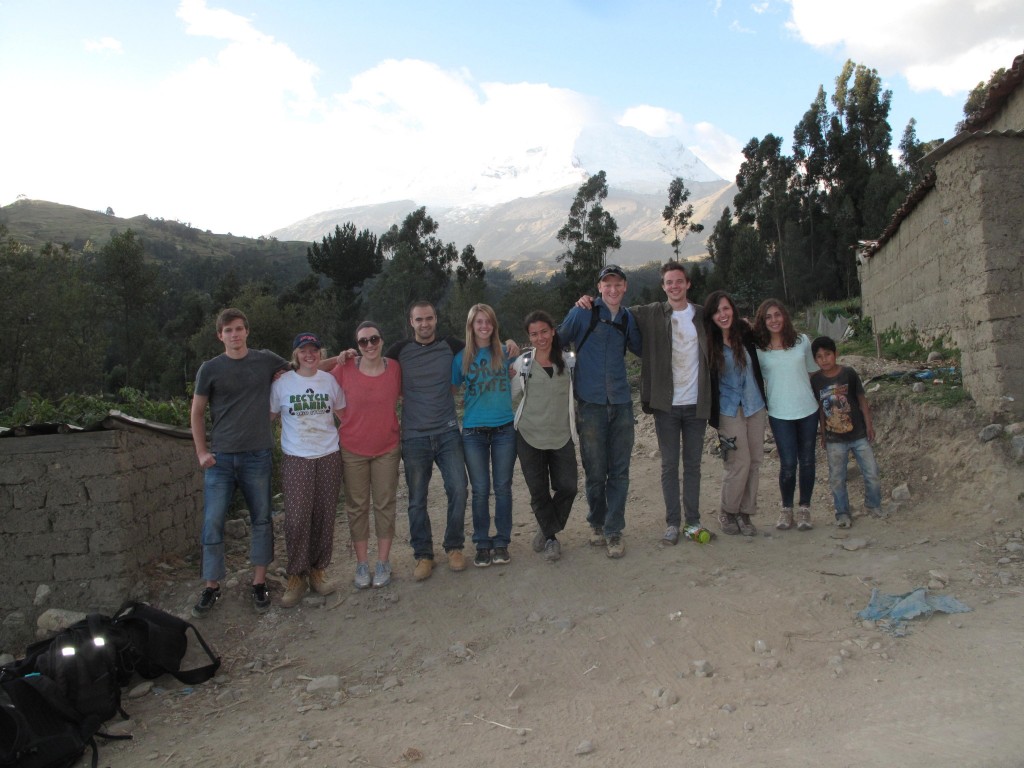I said I’d share about my Peru trip all along the way, and several months later I’m sitting down to do my first post. Sorry! Internet and free time were not plentiful. I have no excuse for once I got back to the states but better late then never?
There are so many memories and moments to share. First I wanted to talk about the site we worked in: Shilla, Peru.
Shilla was a 15 minute ride from our hotel in Carhuaz. It was way up in the mountains and every morning we got a stunning view of snow-capped Mt Huazcaran. Every single day we oooooh’ed and aaaahhh’ed over it on the drive there and several times throughout the work day.
Shilla is pretty remote and up in the mountains. Our work site, specifically, was too high up for the truck with our equipment. So we took it up on our shoulders from our host family’s home.
Our host family was made up of parents Celestino and Señora Norma plus their four sons.
Shilla is full of very hard-working “campesinos,” rural people who tend to their fields all day by hand–no tractors, power tools are to be found. A neighbor was using pre-made bricks and looked almost out of place with the modern materials.
Women wore traditional outfits with lots of layers–it reminded me of Colorado in that the high temperatures and low humidity made it cold at night and hot in the sun during the day. Only in Shilla the layers weren’t shed throughout the day. These women often were the ones in the campos (crop fields). Growing papas (potatoes), maize, cilantro, and quinoa. They worked until sundown and then had little light to travel by–making it difficult for the women to gather for the women’s organization at Sonja’s house.
In Shilla everyone says hello. You make sure to say the time-appropriate greeting as you pass people on the road. The site had never hosted gringo volunteers before so I’m sure seeing us hauling bamboo bundles up the mountain with pathetic ‘omg this hurts, what is this incline?’ look on our faces was a pretty humorous sight for the locals.
Our host family brought us into their home with open hearts and showed us true humility, work ethic and compassion. As brief a time we spent with them, they made a lasting impression on all of us.



















